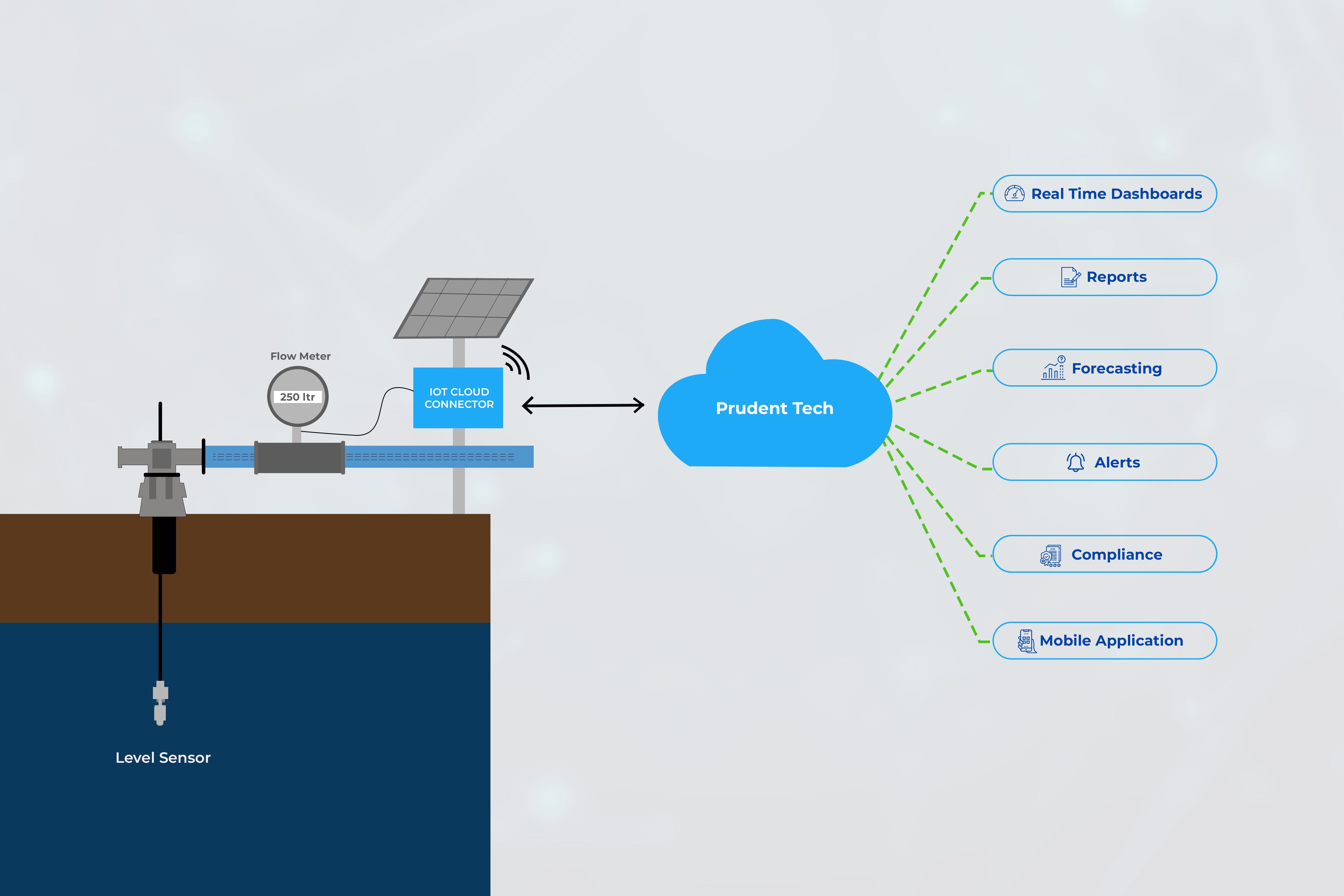
Groundwater Monitoring Telemetry System
According to the most recent CGWA standards, any industry that extracts more than 10 cubic meters of water must deploy an IoT system for groundwater monitoring and obtain a NOC.
Within ninety days of receiving the NOC, you have to implement the groundwater telemetry system in each of your currently-existing groundwater abstraction structures.
According to the gazette announcement, there might be a penalty of Rs 2,000,00 for either not installing the Groundwater telemetry system or operating one that is malfunctioning.
The Sustainability Cloud's componentsBenefits of using The Sustainability Cloud
- Real-time, round-the-clock monitoring of pressure, temperature, flow, and level.
- Organize the data you have on water quality.
- Create reports that may be shared or used internally.
- Receive notifications via SMS and email to help with maintenance and planning.
- To avoid overextraction and adhere to the necessary established limitations, forecasting and baselining are necessary.
Key benefits
Water-Flow
A groundwater monitoring system (CWGA) facilitates the careful observation of groundwater dynamics by offering continuous data on water levels, flow rates, and other parameters. This allows users to observe variations in flow patterns.
Water Temperature
Water's electrical conductivity normally rises with temperature, so CWGA can detect possible temperature changes by monitoring variations in conductivity.
Pressure
Monitoring pressure across different depths within an aquifer helps understand its hydrogeological properties and flow dynamics. Long-term data can reveal how pressure fluctuates with seasonal changes in precipitation and recharge.
Depth and Level
The key metrics for aquifer health. Monitoring these over time reveals sustainable use and predicts future water availability.